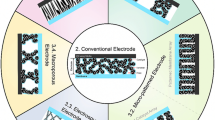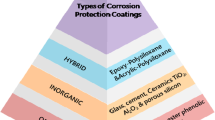Abstract
On the basis of results of the study, samples of chemically resistant track membranes have been obtained. The structure of the porous membrane has been formed via bombardment of a polyvinylidene fluoride (PVDF) film with 41-MeV argon ions followed by thermal pretreatment and chemical etching. The PVDF ion track membrane can be used for manufacturing a proton-exchange membrane.
Similar content being viewed by others
References
R. Mazzrli, et al., Nucl. Instrum. Methods Phys. Res., Sect. A 226, 575 (2004).
V. M. Golovkov, et al., Izv. Vyssh. Uchebn. Zaved., Fiz., No. 4, 187–192 (1998).
A. B. Solov’ev, et al., Kolloidn. Zh. 67(2), 248–258 (2005).
V. M. Golovkov and V. V. Sokhoreva, Izv. Vyssh. Uchebn. Zaved., Fiz. 3(10), 275–279 (2007).
Author information
Authors and Affiliations
Corresponding author
Additional information
Original Russian Text © V.M. Golovkov, V.V. Sokhoreva, T.I. Sigfusson, 2012, published in Membrany i membrannye tekhnologii, 2012, Vol. 2, No. 1, pp. 13–15.
Rights and permissions
About this article
Cite this article
Golovkov, V.M., Sokhoreva, V.V. & Sigfusson, T.I. Formation of chemically resistant track membranes based on polyvinylidene fluoride. Pet. Chem. 52, 462–464 (2012). https://doi.org/10.1134/S0965544112070055
Received:
Published:
Issue Date:
DOI: https://doi.org/10.1134/S0965544112070055




